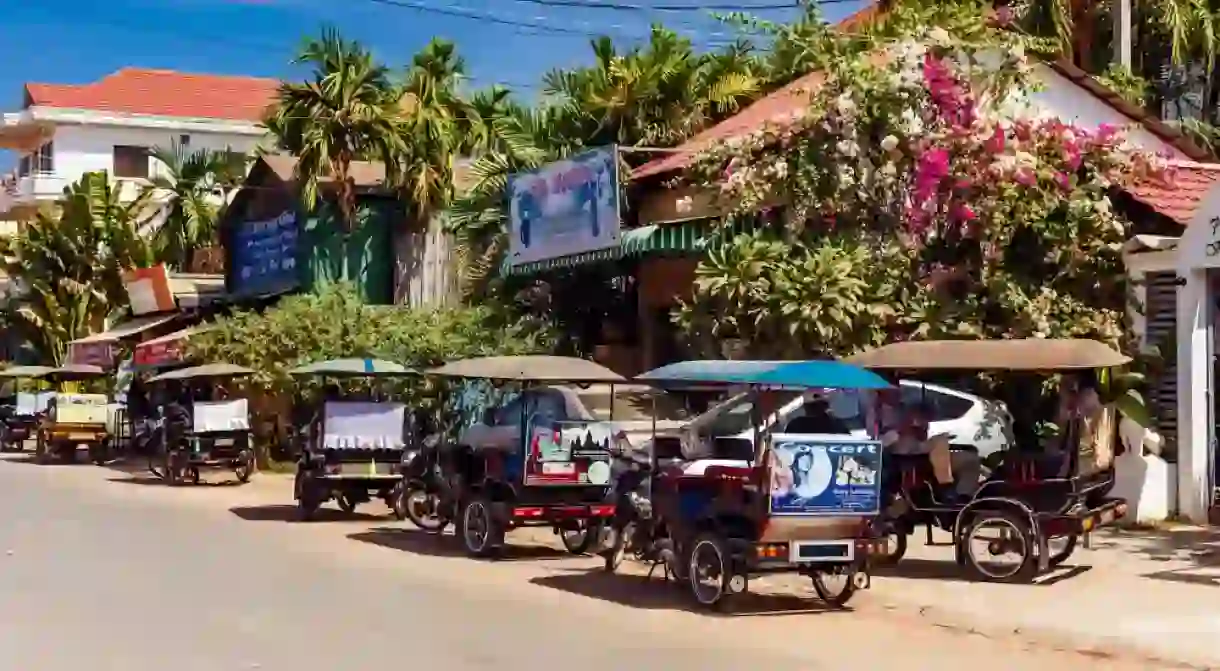Is Cambodia's Tuk-Tuk Culture Dying?

As soon as you step off the bus or out of the airport in Cambodia, it’s highly likely you’ll be bombarded by tuk tuk drivers touting for your fare. With this is mind, it’s hard to believe Cambodia’s seemingly thriving tuk tuk culture is under threat, but recent years have seen a shift in transport trends. While tuk tuks are a long way from extinction, we look at the rising struggle drivers are facing for survival.
Cambodia’s corners are cluttered with collections of tuk tuk drivers huddled in one carriage, playing cards or chatting as they wait to catch their next fare.
Traditionally tuk tuks and motos – or motorbike taxis – were the sole form of public transport in Cambodia, with locals and tourists using them to get around. However, recent years have seen tough times for tuk tuk drivers, with increased competition on the streets heating up the daily struggle for survival.

Too many tuk tuks – four wheel passenger carriages towed by a motorbike – in popular tourist hubs, such as Phnom Penh and Siem Reap, are the main issue. As more migrants have left rural Cambodia and headed to the cities to find work, the number of registered tuk tuk drivers operating in the capital has risen to 10,000. There are a further 6,000 working in Siem Reap, according to figures from the Independent Democracy of Informal Economy Association, the country’s largest tuk tuk association.
Facing heightened competition from rival tuk tuks has led many drivers to hike up their rates, leading to their latest challenge: taxi and tuk tuk apps.
The Uber trend swept into Cambodia when Exnet Taxi Cambodia launched in June 2016, the country’s first taxi app. Noting the rise in tuk tuk prices, the inconvenience of bartering fares and the common problem of drivers not knowing where they are going, the Cambodian company wanted to provide users with a reliable, cheap and easy way to travel throughout Phnom Penh.

Working in a similar way to Uber, users download the app and use it to book their ride. Today, Exnet boasts a fleet of about 800 drivers, offering two services: classic (which uses a GPS metre to calculate the cost of flexible rides) and SUV (a fixed fare and route).
Exnet’s successful launch paved the way for a swathe of similar apps, which are becoming increasingly more visible throughout the Cambodian capital.
PassApp Taxis is another popular passenger application. Launched in October 2016, it offers metre taxis and their alternative tuk tuks – similar to the three-wheeled autorickshaws found in India – across Phnom Penh. Fees are about 2,000 riel (50 cents) a kilometre, a fraction of the rate that tuk tuks on the street charge.

Another major player in the local market is Go-Xpress, which launched in May this year. It provides metred taxis, tuk tuks and motos, as well as food delivery.
While the introduction of these apps, which offer a cheaper and more reliable way to get around, has tuk tuk drivers trembling, the soft launch of global giant Uber in Cambodia in June meant the entire industry had to step up its game to keep up with competition.
These new transport options mean cheaper and easier rides for passengers, but they could also spell the end of tuk tuk transport in Cambodia as we traditionally know it.













